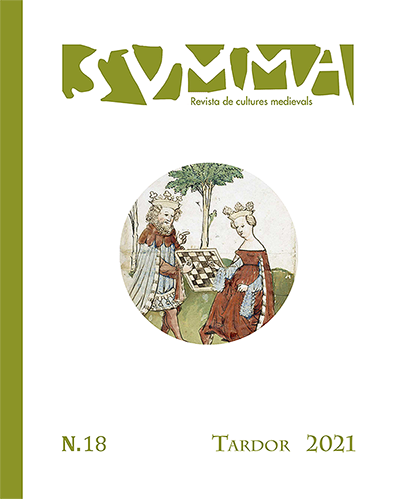El nombre del arquitecto de la iglesia de San Miguel de Cuixá consagrada en 975
DOI:
https://doi.org/10.1344/Svmma2021.18.3Paraules clau:
architect, Middle Ages, CuxaResum
The Saint Hilary of Carcassonne relic’s translation was explained in a text written in the year 978. This narration, from which I have recently published a new edition, mentions a master builder that played a key role in the relic’s discovery. The master was brought by Garin, the abbot of the Saint-Miquel-de-Cuixa monastery, and he was supposed to be the architect who built the second church of Saint-Miquel-de-Cuixa. The count Sunifred and the abbot Ponce had initiated this rebuilding in the year 956 and on 28th September 975 Garin finished it. After the research on the manuscript copy and the various editions from the second half of the 17th century, some of them edited directly from the currently lost original one, it is concluded that the name of the architect was Ledo (Letus). Knowing the name of an architect who lived before the 11th century is, undoubtedly, a unique event, even more when this architect is considered as a virtuous man.
Descàrregues
Publicades
Número
Secció
Llicència
Els autors que publiquen en aquesta revista estan d'acord amb els termes següents:
a. Els autors conserven els drets d'autoria i atorguen a la revista el dret de primera publicació de l'obra. SVMMA Revista de Cultures Medievals publica amb una llicència de Reconeixement-NoComercial-CompartirIgual 3.0 Espanya de Creative Commons, la qual permet compartir l'obra amb tercers, sempre que aquests en reconeguin l'autoria, sense ànim de lucre i compartin l'obra derivada en les mateixes condicions.
b. Els autors són lliures de fer acords contractuals addicionals independents per a la distribució no exclusiva de la versió de l'obra publicada a la revista (com ara la publicació en un repositori institucional o en un llibre), sempre que se'n reconegui la publicació inicial en aquesta revista.
c. S'encoratja els autors a publicar la seva obra en línia (en repositoris institucionals o a la seva pàgina web, per exemple), amb l'objectiu d'aconseguir intercanvis productius i fer que l'obra obtingui més citacions (vegeu The Effect of Open Access, en anglès).





